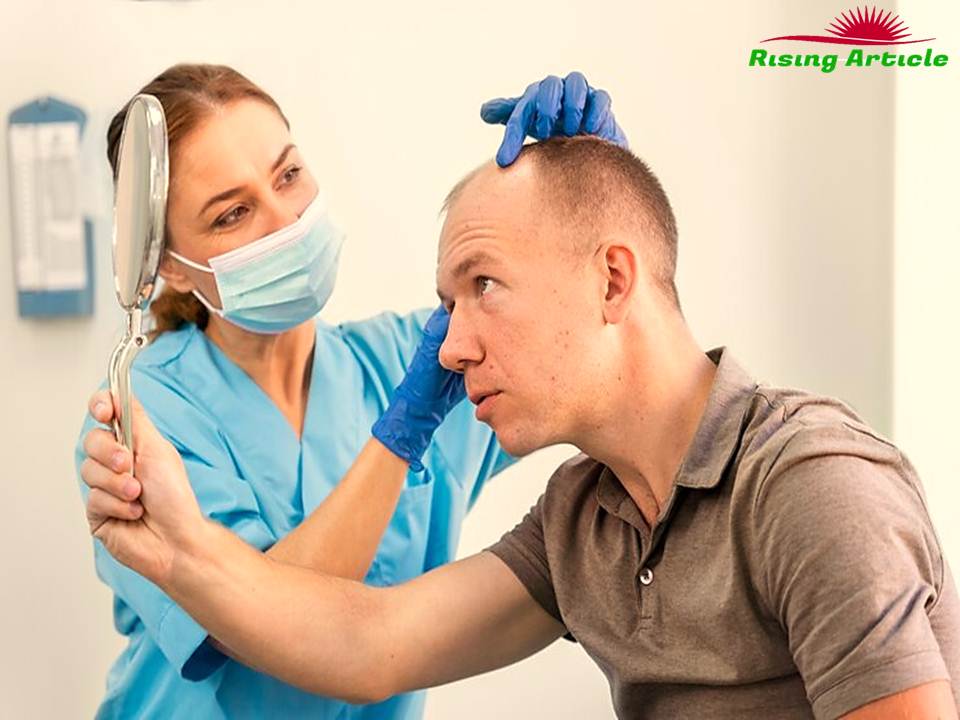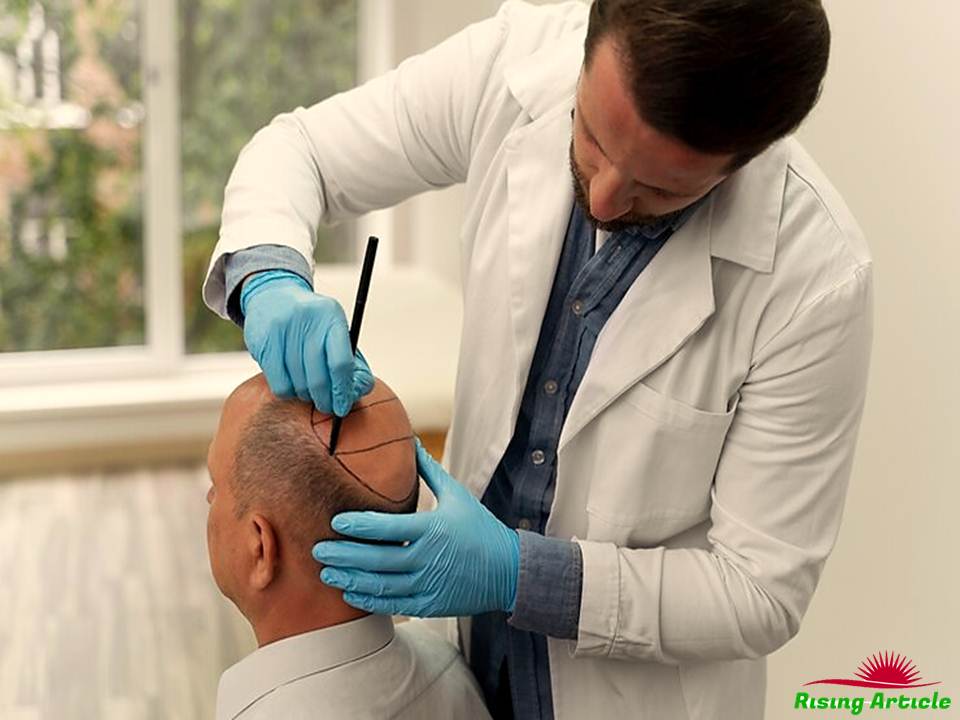The slow loss of hair in a certain pattern, which often begins around the temples and crown of the head, is a common symptom of this condition, which is characterized by a gradual loss of hair. This disorder is characterized by a gradual loss of hair. In addition to being referred to as androgenetic alopecia, this disorder is also known as male pattern baldness which is another name for it.
The ailment that is referred to by both of these terms is the same. In spite of the fact that it is a genetic condition that cannot be cured, there are a number of therapeutic treatments that are available to make an effort to either slow down or reverse the trend of hair loss. Those individuals who have not yet been diagnosed with the illness are eligible to get these specific treatments. In this article, a complete analysis of the treatments that are now available for male pattern baldness is presented. These treatments are examined in detail.
Male pattern baldness treatment
 The condition that is commonly referred to as male pattern baldness, also known as androgenetic alopecia, is a widespread condition that affects a considerable number of men all over the world. This condition is defined by a persistent pattern of hair loss, which typically begins around the temples and crown, and it is mostly affected by characteristics that are related to heredity and hormones.
The condition that is commonly referred to as male pattern baldness, also known as androgenetic alopecia, is a widespread condition that affects a considerable number of men all over the world. This condition is defined by a persistent pattern of hair loss, which typically begins around the temples and crown, and it is mostly affected by characteristics that are related to heredity and hormones.
Even though it is inherited, there is a wide variety of treatment options available that are designed to alleviate the symptoms of male pattern baldness and potentially even reverse them to some degree. These treatments are intended to lessen the prevalence of the condition. This all-encompassing guidebook examines the many treatment methods that are available, which include surgical procedures, topical therapies, and pharmaceuticals.
Understanding Male Pattern Baldness
Male pattern baldness is strongly linked to the hormone known as dihydrotestosterone (DHT), which is produced from human testosterone. This hormone is responsible for the development of male pattern baldness. Both the thinning and shortening of individual hair strands are caused by DHT, which is also responsible for the shrinkage of hair follicles. DHT is responsible for both of these effects simultaneously. Genetic predisposition is the primary factor that determines the vulnerability of hair follicles to DHT. This propensity ultimately leads to the usual pattern of hair loss that is observed in male pattern baldness.
Non-Surgical Treatments
Minoxidil
One of the many treatments that may be obtained without a doctor’s prescription is minoxidil, which stands out among the many options. By increasing the amount of blood that flows to the hair follicles, this topical solution is supposed to stimulate hair development. It is administered directly to the scalp, and its mode of action is assumed to involve the stimulation of hair growth. The scalp is the target area for the application of this particular product. One of the most well-liked options for people who are seeking for non-surgical treatments is minoxidil, which can be acquired without a prescription and is available in a number of different formulations, including either a foam or a liquid form.
Finasteride
An oral medication called finasteride, which can only be obtained with a prescription from a medical professional, is effective because it inhibits the production of DHT. Finasteride works by reducing the amount of DHT that is present in the scalp, which in turn helps to successfully slow down the rate at which hair is lost and encourages the growth of new hair. In view of the fact that finasteride has the potential to raise the risk of birth defects in male fetuses, it is of the utmost importance to become aware of the fact that the medication should not be given to females, particularly those who are pregnant.
Ketoconazole Shampoo
When it comes to the treatment of male pattern baldness, ketoconazole, which is primarily an antifungal medication, is occasionally applied to the scalp in the form of shampoo formulations. Despite the fact that the major objective of this treatment is to treat scalp conditions including dandruff and seborrheic dermatitis, there is a growing body of evidence that suggests it may also have the potential to be useful to the development of hair.
Surgical Interventions

Hair Transplantation
The method of hair transplantation is defined as the extraction of hair follicles from areas of the scalp that are experiencing significant growth (that is, donor sites) and the transplanting of those hair follicles to parts of the scalp that are experiencing hair loss or thinning (that is, receiver sites). Procedures such as follicular unit transplantation (FUT) and follicular unit extraction (FUE), which are examples of breakthroughs in the area, are utilized on a regular basis as part of the standard practice.
Scalp Reduction
Scalp reduction is a surgical procedure that involves the removal of bald parts of the scalp, which is then followed by the stretching of the remaining areas of the hair-bearing scalp in order to cover the areas that have been badly affected by the baldness. Despite the fact that this method is effective, it is used for hair transplantation less frequently than it was in the past since more advanced hair transplant processes have been developed.
Emerging Therapies
As a result of continuous research, a number of exciting alternatives have been discovered. Some of these options include low-level laser therapy, platelet-rich plasma (PRP) injections, and stem cell therapy. These one-of-a-kind procedures are designed to offer additional options for individuals who are looking for treatments that are not only effective but also less invasive. The goal of these procedures is to stimulate hair follicles and increase hair growth.
Conclusion:
In light of the fact that male pattern baldness can have a considerable impact on a person’s perception of their own value, it is imperative that various treatment options be investigated. It is feasible for individuals to find individualized treatments that are customized to fit their unique requirements. These techniques can range from ones that do not require surgery, such as minoxidil and finasteride, to those that require surgery, such as hair transplantation.
Because it is absolutely vital to contact with qualified hair restoration specialists or healthcare professionals in order to select the treatment approach that is both appropriate and effective, it is essential to talk with them. The panorama of therapy for male pattern baldness continues to grow as research towards the condition continues to evolve. This provides hope to those individuals who are looking for effective therapies to counteract the effects of this common disorder.




